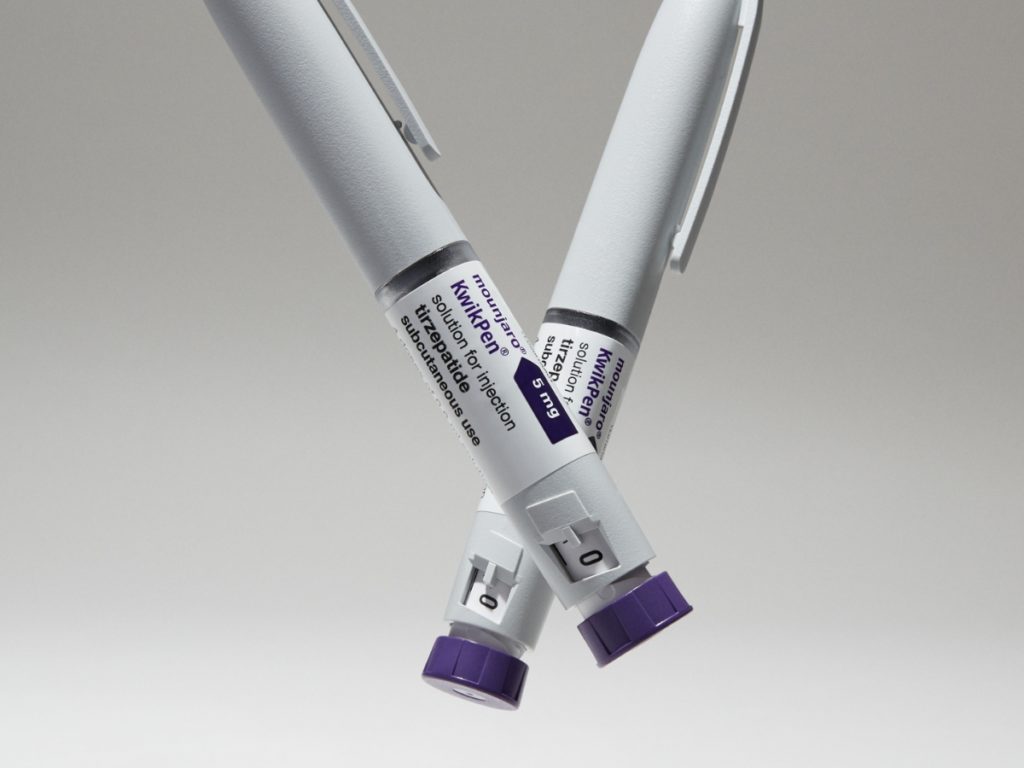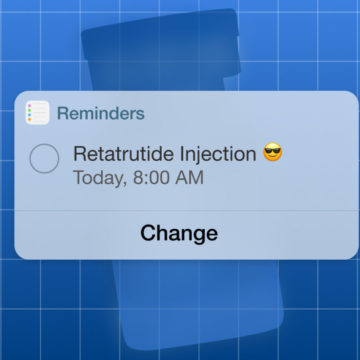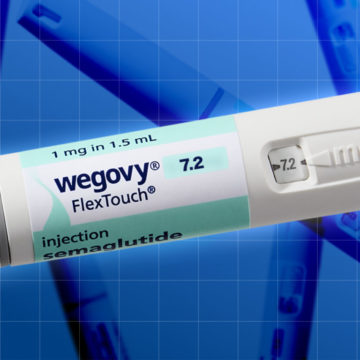Finding the right Mounjaro dose can feel confusing, especially when you’re starting your weight loss journey or adjusting your treatment. In this blog post, we’ll walk you through how Mounjaro dosing works in the UK and what to expect as you progress.
Summary
- Mounjaro (tirzepatide) is a once-weekly injection used for weight loss and type 2 diabetes, helping control blood sugar and reduce appetite.
- Dosing starts low at 2.5 mg and may increase every 4 weeks up to the top dose of 15 mg, so your body can adjust and side effects stay manageable.
- The best results come from finding your personal “maintenance dose” and using Mounjaro alongside healthy eating, regular exercise, and check-ins with your healthcare professional.
Overview of Mounjaro
Mounjaro is a weekly self-injectable medication that contains the active ingredient tirzepatide. It is prescribed for weight management in people who are living with obesity or are overweight, as well as for managing type 2 diabetes. It belongs to a class of medications called GIP/GLP-1s or glucagon-like peptide-1/glucose-dependent insulinotropic polypeptide receptor agonists.
Mounjaro works by mimicking the GLP-1 and GIP hormones that your gut naturally produces after eating. This supports weight loss by keeping blood sugar levels in check, curbing your appetite, and helping you feel fuller for longer. [1]
Mounjaro Dosing Guidelines
Even if you’ve already tried another injectable weight loss treatment before, you’ll start Mounjaro on the lowest dosage and then increase every four weeks. The starting dose for Mounjaro is a 2.5mg injection once a week. Your dose may increase every four weeks, and the maximum dose of Mounjaro is 15 mg. However, it’s important to find the right dose that works for you. This could be a lower dose that you take over the long term that curbs your appetite, helps you lose weight steadily and keeps side effects mild and manageable. [2]
This chart shows how your dosage will increase over five months:
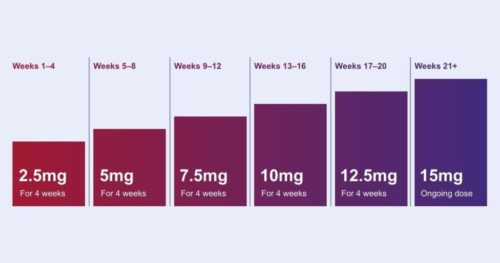
Why Do You Have to Increase Your Mounjaro Dose?
Experts recommend starting Mounjaro at a lower dose to help your body adjust, particularly to common side effects like nausea or digestive changes. Jumping straight to a higher dose could make these side effects more severe.
Your dose is usually increased over time to maximise the effectiveness of the medication, as GLP-1 medications tend to work better at higher doses.
However, it’s important to monitor your response to the medication, including whether you’re seeing results or experiencing any side effects. You can always stay on a lower dose for longer or drop down, it’s about the dose that works best for you.
What is a Maintenance Dose?
Your maintenance dose refers to the dose that provides the best results, while keeping side effects manageable. This may be the maximum recommended dose for your treatment, or a lower dose that achieves the best balance between effectiveness and minimal side effects.
Preparing For Your First Dose
Your four weeks of Mounjaro doses come in a pre-filled pen (the Mounjaro KwikPen) – which you’ll use on the same day each week. The pen is simple to use and the needles are very small, so it’s relatively pain-free and easy to do. With your first 2.5mg dose, you’ll also receive a sharps bin to dispose of your KwikPens safely.
Once you’ve prepped the injection site with alcohol swabs and are ready, you can inject your Mounjaro pen in the abdomen, thigh or upper arm at any time during the day, with or without food. It’s not advised to inject into the same site each time – so rotate weekly [2]. You’ll receive detailed instructions with your first order, and our clinical team is also on hand to offer any extra guidance.
Afterwards, dispose of the pen safely and keep an eye out for any side effects.
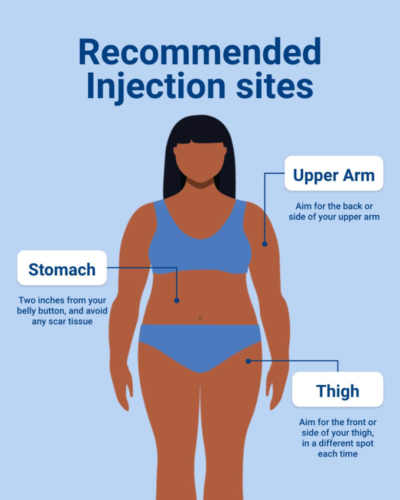
Maintaining Optimal Results
There are a few things to remember to help ensure you can maintain optimal results with Mounjaro. This includes using the medication alongside a healthy lifestyle and staying on top of check-ins with your clinical team.
Weight loss medication works best when used alongside a balanced diet and regular exercise. There are some other things you can do to optimise your results, like drinking plenty of water, especially before meals, to aid fullness and hydration. Opt for smaller, nutrient-rich meals that include lean proteins, plenty of fibre, and are low in fats and sugars. And finally, chew food thoroughly and consider a short walk after eating to support digestion and blood sugar regulation.
Tracking your progress is also essential for our clinical team to both monitor your health, identify side effects and adjust your dosage over time. These check-ins are included in the cost of your medication and are all online, so it’s important to make use of them.
If you think Mounjaro, or any of our other available medications, could help you reach your weight loss goals, our clinical experts will help you find the right treatment suitable for your needs on our website.
References
- Jastreboff AM, Aronne LJ, Ahmad NN, Wharton S, Connery L, Alves B, et al. Tirzepatide Once Weekly for the Treatment of Obesity. New England Journal of Medicine [Internet]. 2022 Jun 4;387(3):205–16. Available from: https://www.nejm.org/doi/full/10.1056/NEJMoa2206038
- Mounjaro KwikPen 2.5mg solution for injection in pre-filled pen – Summary of Product Characteristics (SmPC) – (emc) [Internet]. www.medicines.org.uk. Available from: https://www.medicines.org.uk/emc/product/15481/smpc#gref
Next review date: 13/10/2028
